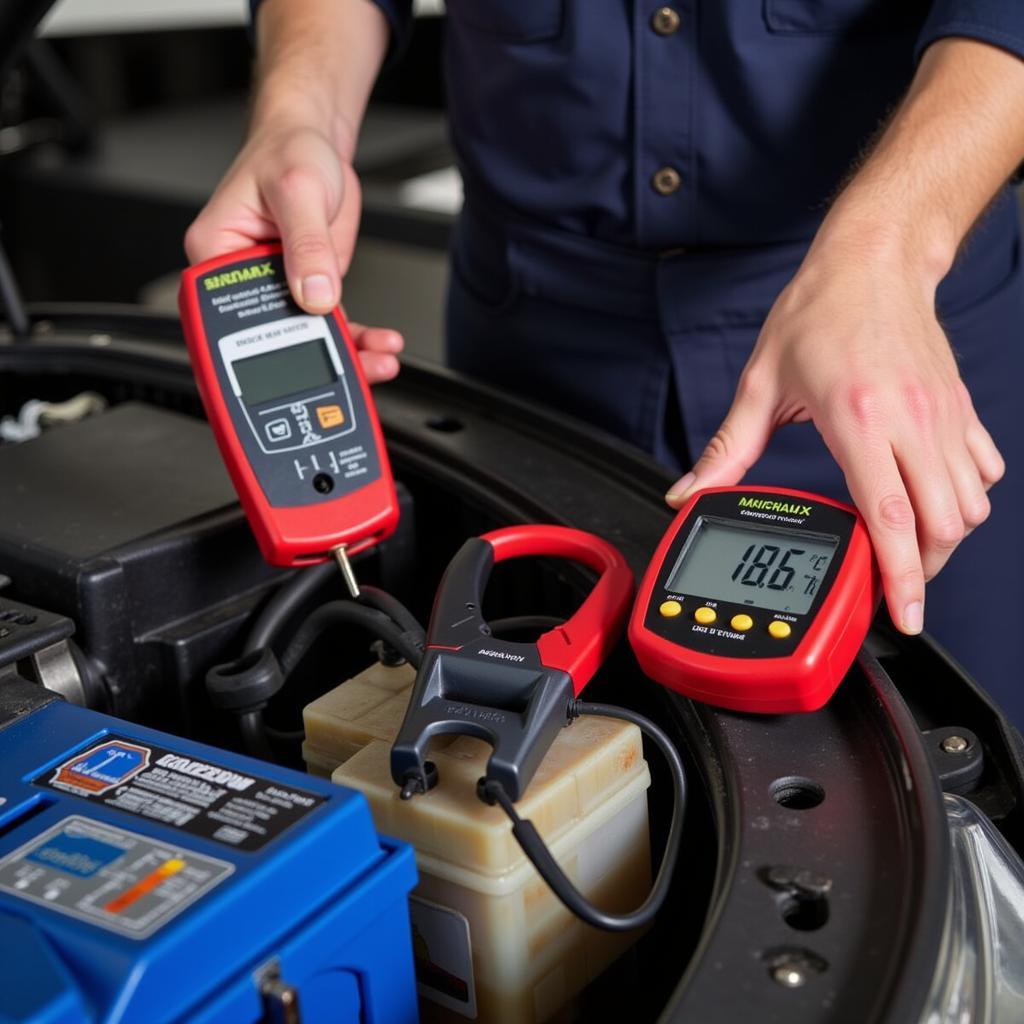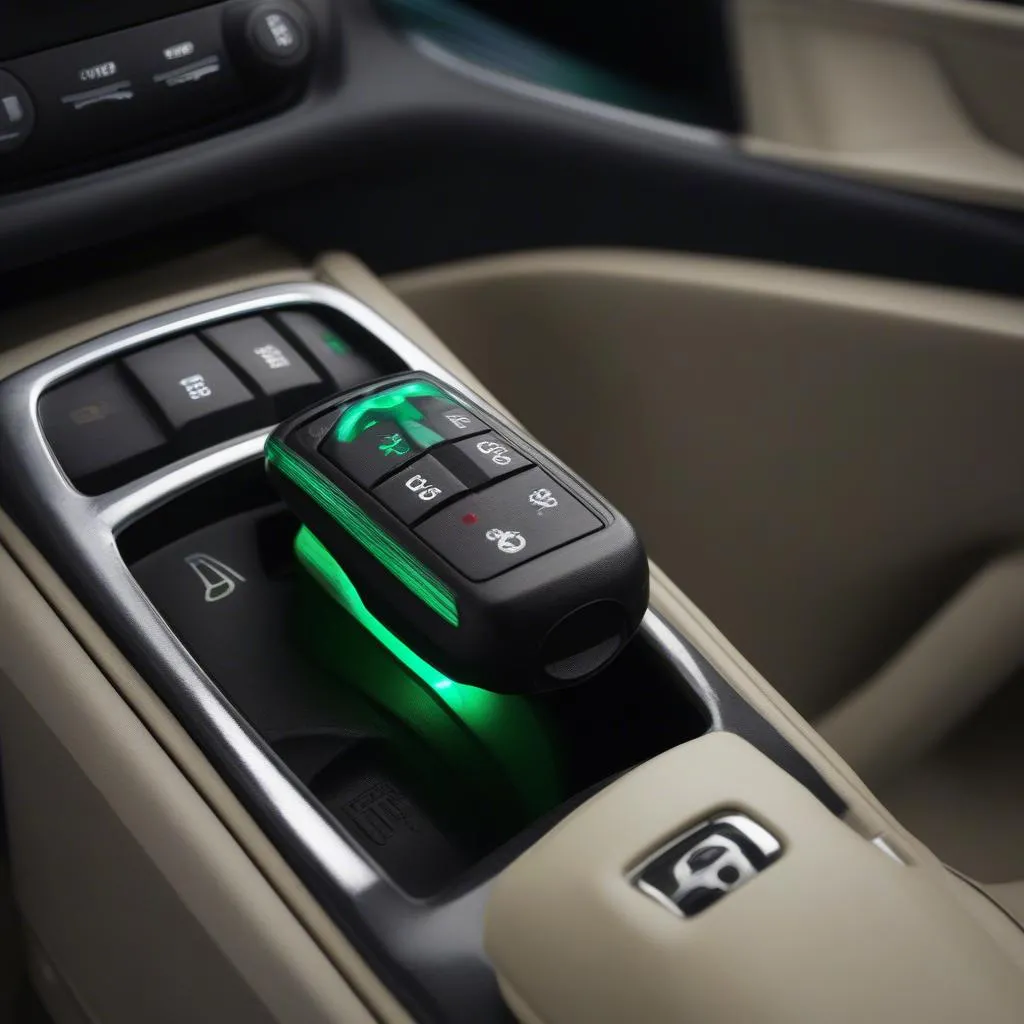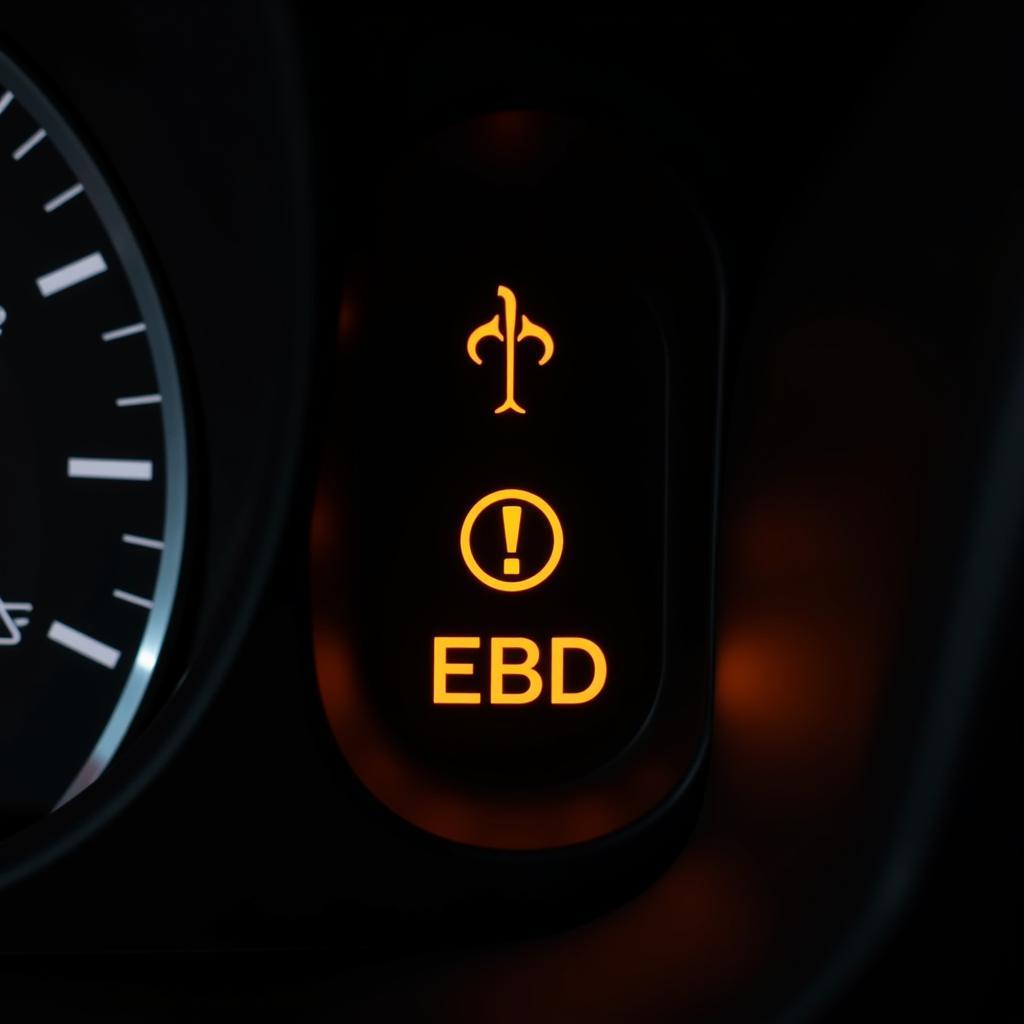Your car battery shows 12 volts, yet your engine refuses to crank. This frustrating scenario is more common than you think. While a 12V reading suggests a healthy battery, it doesn’t guarantee sufficient cranking amps to start the engine. Let’s dive into the reasons why your car battery has 12v but won’t start and explore solutions for getting you back on the road.
Understanding the “12V But No Start” Problem
A 12-volt reading on a multimeter across your battery terminals simply indicates that the battery holds a surface charge. Starting a car requires a significant surge of power, measured in cranking amps (CA) or cold cranking amps (CCA). Even if the voltage seems fine, low cranking amps can prevent the starter motor from turning the engine over. Several factors can contribute to this issue.
Common Causes of a Car Battery Having 12V But Not Starting
- Bad Starter Motor: A faulty starter motor can draw excessive current or fail to engage altogether, preventing the engine from cranking.
- Corroded Battery Terminals: Corrosion on the battery terminals can disrupt the flow of electricity to the starter, even with a good voltage reading.
- Faulty Alternator: While a bad alternator won’t typically cause a no-start condition initially, it can deplete the battery’s cranking amps over time.
- Wiring Problems: Damaged or loose wiring in the starting circuit can hinder current flow to the starter.
- Parasitic Drain: A parasitic drain occurs when an electrical component continues to draw power even when the car is off, gradually draining the battery and reducing cranking amps.
- Extreme Temperatures: Extreme cold can thicken engine oil and increase the load on the starter, requiring more cranking amps. Conversely, extreme heat can damage the battery internally.
- Old Battery: Even if showing 12V, an old battery can lose its ability to hold a charge and deliver sufficient cranking amps.
Troubleshooting Your Car’s Starting Problem
Before jumping to conclusions, methodical troubleshooting can save you time and money. Here’s a step-by-step guide:
- Check the Battery Terminals: Inspect the battery terminals for corrosion. Clean them with a wire brush and baking soda solution if necessary.
- Test the Battery with a Load Tester: A simple voltage reading isn’t enough. A load tester will tell you the battery’s true cranking amps.
- Inspect the Starter: Tap the starter motor gently with a hammer while someone attempts to start the car. If the car starts intermittently, the starter might be the culprit.
- Check Wiring and Connections: Visually inspect all wiring and connections in the starting circuit for damage or looseness.
- Rule Out a Parasitic Drain: If the battery drains overnight, use a multimeter to check for a parasitic drain by measuring current draw with the car off.
 Performing a Car Battery Load Test
Performing a Car Battery Load Test
Remote Diagnostics and Software Solutions
Modern vehicles rely heavily on software. In some cases, a software glitch can cause starting issues. Remote diagnostics and software programming can address these problems without needing a physical visit to a mechanic. These services can identify underlying software issues affecting the starting system, update control modules, and even reprogram the car’s computer.
“Remote diagnostics and programming are game-changers in the automotive industry,” says Alex Thompson, Senior Automotive Electrical Engineer at Remote Auto Solutions. “They allow us to pinpoint software-related starting issues and implement fixes quickly and efficiently.”
Solutions for a Car Battery with 12V But No Start
- Replace the Battery: If the battery load test reveals low cranking amps, replacement is necessary.
- Replace or Repair the Starter Motor: A faulty starter motor typically requires replacement or repair by a qualified mechanic.
- Clean or Replace Battery Cables and Terminals: Thoroughly clean corroded terminals or replace damaged cables to ensure proper electrical connections.
- Address Wiring Issues: Repair or replace any damaged or loose wiring in the starting circuit.
- Eliminate Parasitic Drains: Identify and fix the source of the parasitic drain to prevent future battery discharge.
- Remote Software Updates and Programming: Consult a qualified technician for remote diagnostic services and software solutions to address software-related starting problems.
Conclusion
A car battery showing 12V but failing to start can be puzzling. However, by understanding the underlying causes and following a systematic troubleshooting approach, you can pinpoint the problem and get your car running again. Remember, a simple voltage check isn’t enough. Testing the battery’s cranking amps and checking the entire starting system are essential steps in resolving this common issue. Don’t hesitate to seek professional assistance for remote diagnostics and software solutions if necessary.
“Regular battery maintenance, including cleaning terminals and checking for parasitic drains, can prevent many starting problems,” advises Maria Sanchez, Lead Technician at AutoTech Diagnostics.
FAQ
- Can a car battery with 12v still be bad? Yes, a 12V reading only indicates surface charge. It doesn’t reflect the battery’s ability to deliver cranking amps needed to start the engine.
- How do I test my car battery’s cranking amps? Use a battery load tester to determine the actual cranking amps.
- What are common signs of a bad starter motor? Clicking sounds, grinding noises, or the engine turning over very slowly are typical signs of a failing starter.
- How do I clean corroded battery terminals? Use a wire brush and a mixture of baking soda and water to clean corrosion from battery terminals.
- What is a parasitic drain, and how do I find it? A parasitic drain occurs when an electrical component draws power even when the car is off. Use a multimeter to measure current draw with the car off to identify the source.
- Can remote diagnostics fix my car’s starting problem? Yes, remote diagnostics can identify and resolve software-related starting issues.
- How often should I replace my car battery? Car batteries typically last 3-5 years, but factors like climate and driving habits can influence lifespan.


